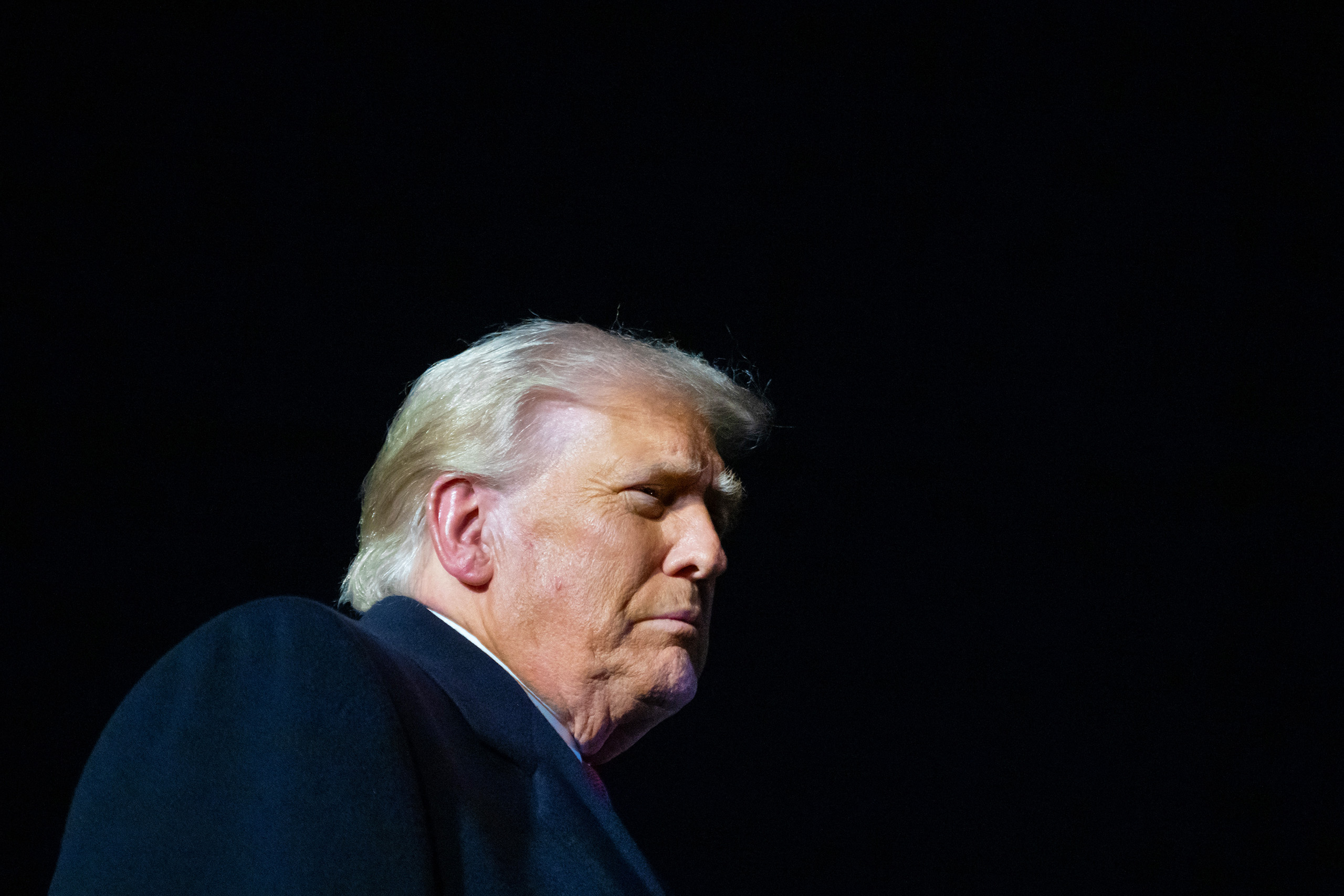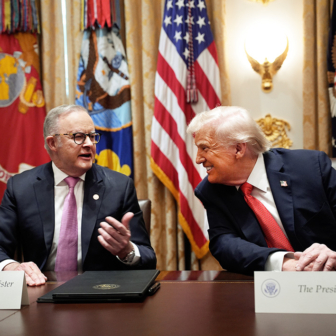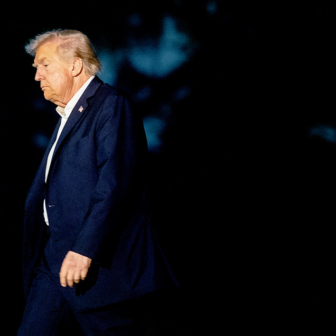The proceedings of the Marine Environment Protection Committee of the International Maritime Organization don’t normally make headline news. (Except perhaps in Ocean Freight Times.) But the extraordinary events at the global shipping regulator’s gathering in London this month have shocked the most seasoned observers. Less than a month before the next UN climate conference, COP30, they mark the beginning of a new era in the global politics of climate change.
The IMO is the United Nations agency responsible for the safety and security of shipping and the prevention of the marine and atmospheric pollution it causes. For more than a decade it has been working, somewhat sedately, on a policy to cut the maritime sector’s greenhouse gas emissions. (Shipping contributes just over 2 per cent of global carbon emissions, rising year on year.)
In the past twelve months the IMO had finally reached agreement on two linked measures: a global fuel standard requiring ships gradually to use less-polluting fuels; and a pricing mechanism for the remaining emissions to provide a further incentive to reduce them. The revenues would go to help green the shipping companies, and assist developing countries. The measures had won the support of the global maritime industry, as well as almost all of the IMO’s 176 nation state members.
But not all. At a special environment committee meeting called to ratify the proposal this month, the United States, Russia and Saudi Arabia opposed the measures and called for the vote on them to be postponed. From the White House Donald Trump made clear his views: “The United States will NOT stand for this Global Green New Scam Tax on Shipping…” he declared on Truth Social. “We will not tolerate increased prices on American Consumers OR the creation of a Green New Scam Bureaucracy to spend YOUR money on their Green dreams.”
But it was inside the IMO’s headquarters that Trump really made his presence felt. As delegates considered the motion to delay the decision, US negotiators openly threatened them. A vote against the United States would lead to tariffs being imposed on their countries, they warned, and the individuals themselves would be denied visas to enter the country.
The Trump administration’s bullying tactics were widely decried; but they proved effective. Before the meeting everyone assumed the carbon reduction measures would pass with a large majority. But the meeting ended, as the United States wanted, with the vote put off for a year. It was clear that many countries had changed their positions in the face of the American threats. Industry leaders put a brave face on it, insisting that they would bring the measures back to pass in 2026. But others warned that Washington would only redouble its threats to ensure the measure is killed off.
The dramatic scenes at the IMO opened a new front in the technological struggle that has defined global climate politics for the last two decades: that between fossil fuels and clean energy.
Over the past ten years, clean energy — wind, solar, hydropower and geothermal sources, together with electric vehicles, electric heating and cooling, battery storage and energy efficiency — had finally gained the ascendancy. As a result of huge cost reductions, renewables are now expected to meet over 90 per cent of the growth in global electricity demand over the next five years. Last year Britain became the first major economy to phase out coal-powered generation altogether (a fitting milestone, as it was also the first country to introduce it, in 1882). Globally, perhaps more remarkably, this year or next will see renewables surpassing coal as the world’s primary source of electricity.
Electric car sales in 2024 exceeded seventeen million globally, making up over a fifth of all cars sold. The market has seen extraordinary growth; 3.5 million more electric cars were sold in 2024 than 2023, a number larger than all the electric cars sold in 2020. In China, electric cars accounted for almost half of all car sales last year.
Meanwhile the global battery market is advancing rapidly as demand rises sharply and prices continue to decline. In 2024, the average price of a car battery pack fell below US$100 per kilowatt-hour, the key threshold to compete on cost with petrol-driven rivals.
Politically, too, the tide seemed to be running out on fossil fuels. In 2021, COP26 in Glasgow agreed that coal-fired power should be “phased down,” and twenty-four countries and a number of leading car manufacturers announced they would end the sale of petrol-driven vehicles by 2040. Two years later, in Dubai, COP28 agreed that the world needed to be “transitioning away from fossil fuels” altogether. The official UN press release declared that this represented “the beginning of the end of the fossil fuel era.”
The processes by which clean energy has begun to out-compete fossil fuels have provided a classic example of the technological innovation and “creative destruction” analysed by this year’s winners of the Nobel Memorial Prize in Economic Sciences. Jan Mokyr, Philip Aghion and Peter Howitt were jointly awarded the prize this month in recognition of their historical and theoretical work explaining how, through innovation, capitalist economies change their industrial structure and thereby develop.
Up to now the role of governments in this process has been largely to encourage and support the insurgent technologies. Wind and solar power began their modern ascent in the 1990s, when Germany first introduced a “feed-in tariff” to subsidise them. The EU followed, and then other countries (including many American states), with mandates requiring electricity producers to use a minimum proportion of renewables.
Companies responded by innovating, improving the new technologies’ performance and lowering their costs. This allowed policymakers to raise the targets. When China started manufacturing and importing renewables at scale in the 2010s, costs fell even more dramatically. In an effective virtuous circle, the targets were raised again. Today solar and wind power are cheaper than coal almost everywhere in the world; policy is no longer needed.
In vehicles, rising fuel-efficiency standards imposed by governments to control air pollution (and then carbon emissions) first just improved the performance of petrol-driven cars. But around twenty years ago technological innovation brought electric vehicles, or EVs, into the mix. As the standards have been raised and EV costs have fallen, creative destruction has taken its course. On a lifetime cost basis, EVs are expected to become cheaper than internal combustion engine vehicles by 2030.
When Donald Trump was elected president — claiming climate change was a “scam,” pulling the United States out of the Paris Agreement and promising to “drill, baby, drill” in his quest to boost the American oil industry — many observers doubted whether US policy would in reality change that much. The green technology subsidies of Joe Biden’s Inflation Reduction Act were bringing too many new jobs to Republican districts; wind- and solar-powered electricity was so much cheaper than coal; the global oil price was not high enough to incentivise new drilling in the Arctic or national parks. For Trump to bring climate change into the culture wars was one thing, such observers supposed (your own correspondent included); actively damaging the American economy was surely another.
But we underestimated him. For Trump, climate change is a war on two fronts: against liberals and their values; and against China. He has proved himself amply able to sacrifice American businesses and employment in pursuit of his twin aims.
Trump has added a new dynamic to the creative destruction process. He is using the power of the American state, not to support the new technologies, but to promote the old. On his first day in office, he signed an executive order to eliminate EV mandates, and in his landmark “Big Beautiful Bill Act” ended the tax credits that had done much to stimulate EV production and sales. The Environmental Protection Agency proposes to rescind its key 2009 finding that greenhouse gases pose a threat to public health. If it does so, vehicle makers will no longer be required to measure, control or report their greenhouse gas emissions at all.
Last month, meanwhile, the US government said it would open thirteen million acres of federal lands for coal mining and provide $625 million to recommission and modernise coal-fired power plants. It has frozen permits for offshore wind projects, ended clean energy tax credits and blocked wind and solar developments on federal lands. This month the administration cancelled $7.6 billion in grants that supported hundreds of clean energy projects in sixteen states (all of them run by the Democrats). Although the Inflation Reduction Act has not been formally repealed, most of its green technology provisions have been terminated.
Energy demand in America is now soaring as the exponential growth of AI data centres sucks in ever more electricity to power them. Just a few years ago Google, Microsoft and Meta all committed to achieve net zero power consumption by 2030, and Amazon by 2040. But these targets are now under threat. US coal consumption, long thought to be in terminal decline, is now set to rise by 7 per cent next year. As one environmental analyst put it, “it’s a steampunk dystopia — bloated, coal-fired data centres in an ever-warmer world.”
Trump is not limiting his fossil fuel drive to the US. He is also using trade and defence deals to pressure countries in Europe and Asia to buy more American gas under decades-long contracts. In its bid to reduce the tariffs Trump imposed, the European Union has committed to import up to A$1.15 trillion of US energy — mostly liquefied natural gas, or LNG — by 2028, more than four times its current imports. Similarly, Indonesia has signed up for A$24 billion in US energy imports. Japan is negotiating a similar deal. Australia is next in line.
Why is Trump doing this? His ideological antipathy to environmentalism and environmentalists is clear. But economically, his target is China. Over the past decade, China has become the global superpower in the manufacture of green technologies. It now controls more than 70 per cent of global solar, wind and battery manufacturing. Chinese-made electric vehicles are now much cheaper — and higher-quality — than Western brands: BYD this year overtook Tesla as the world’s largest electric and hybrid vehicle manufacturer.
As global demand for renewable energy and EVs rises, the Chinese economy grows stronger. By launching an assault on clean energy both domestically and overseas, Trump is trying to limit China’s global dominance.
He is already having some success. Major car manufacturers in Europe, including Audi, Volvo and Porsche, have announced they are slowing their shift to EVs or even abandoning them altogether. Most major US banks (including JP Morgan Chase, Citigroup, Bank of America, Morgan Stanley, Wells Fargo and Goldman Sachs) have weakened or abandoned altogether their green investment policies, and internationally the 150-stong Global Net Zero Banking Alliance has shut down.
Lobbied on all sides by worried manufacturing industries facing higher energy costs and Chinese competition, the EU is engaged in a painful process of weakening its carbon targets and regulations. Inspired by Trump, and exploiting concerns about inflation and the cost of living, right-wing parties have targeted European countries’ net zero goals and policies. Public support for climate action in Europe remains high, but governments are increasingly nervous. Having already delayed its EV targets, the British government is considering pushing back its flagship pledge to achieve net zero power by 2030.
In the long term, few analysts believe the global transition to clean energy can be derailed. Climate impacts are so severe and evident, and the costs of clean energy falling so rapidly, that both politics and economics will demand an end to fossil fuel use. But how far away the long term is remains unclear. It’s long been understood that the oil, gas and coal industries would work hard to resist the transition, and governments throughout the world have become familiar with their lobbying and public communication tactics. But as clean energy firms have expanded, a counter-lobby has grown up to challenge the claim that fossil fuels are needed to provide jobs and energy security. This technological and political struggle always looked like being the key conflict of global climate policy. But in President Trump one side has acquired a new weapon. •




